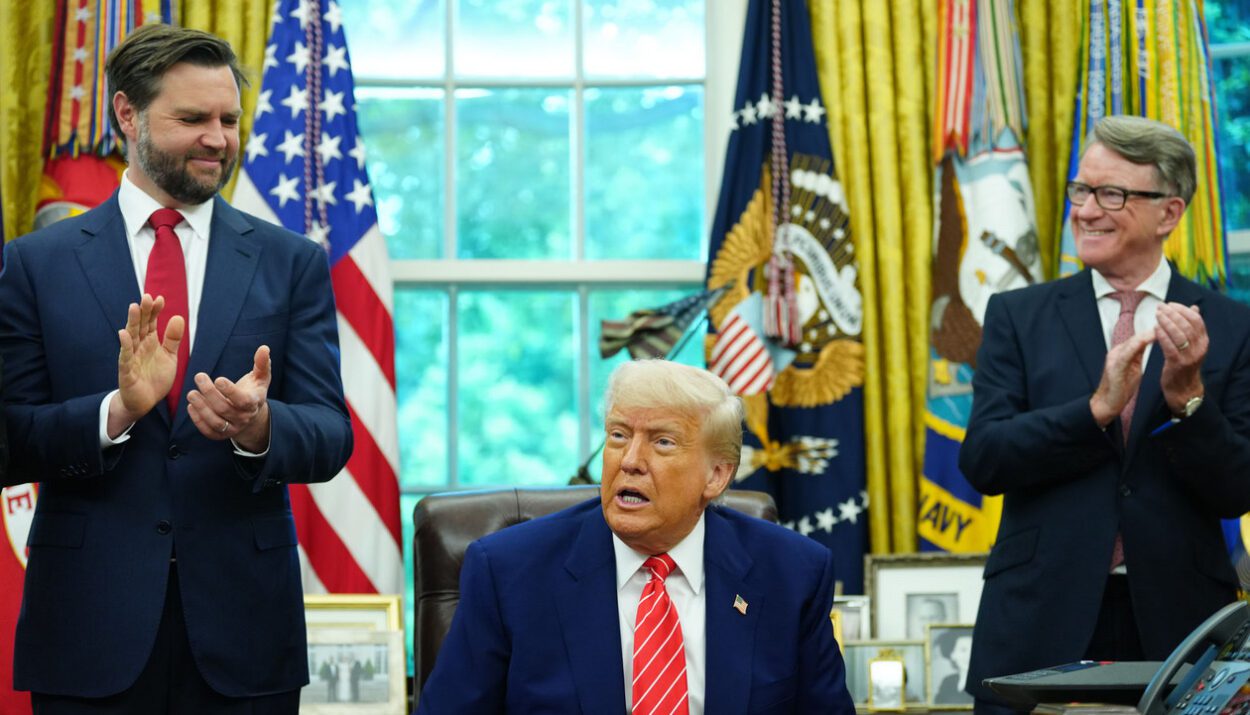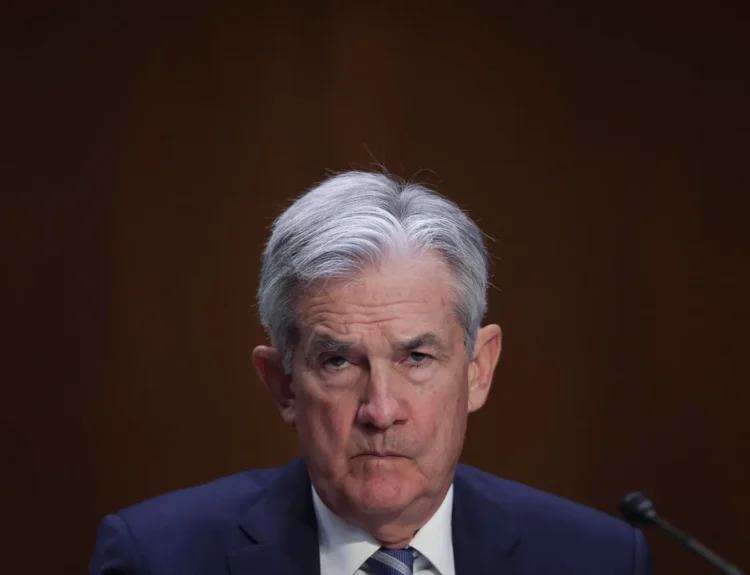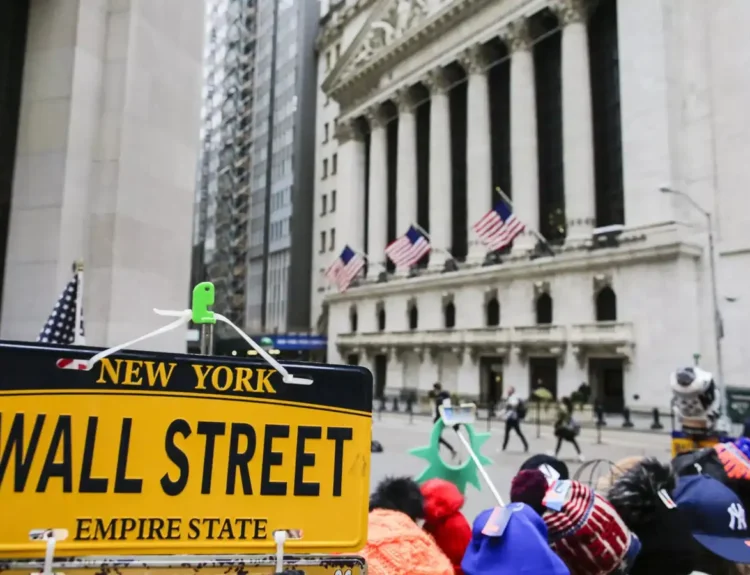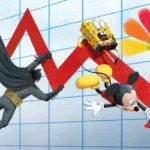President Donald Trump and UK Prime Minister Keir Starmer unveiled what they called a “historic” US-UK trade deal — a major announcement framed as a victory for both nations. But a closer look at the details reveals a mix of limited economic benefits, lingering tariffs, political posturing, and unresolved tensions that may shape future global deals.
Here’s a breakdown of what’s really in the deal — and what’s missing.
What’s Actually in the Deal?
✅ For the U.S.:
- $5 billion in new export opportunities (Commerce estimate): beef, ethanol, chemicals, machinery, pharmaceuticals, and more.
- $10 billion order for Boeing ($BA) planes — a symbolic win for U.S. manufacturing.
- First-ever tariff-free beef quota into the UK (13,000 metric tonnes).
- Reduced tariffs on ethanol (UK’s 19% ethanol tariff cut to zero).
- Easier access to UK’s public procurement market and “preferential treatment” under future Section 232 tariffs.
✅ For the UK:
- Auto tariffs cut: From 27.5% to 10% on 100,000 cars (nearly the full 2024 export volume).
- Steel tariffs eliminated: From 25% to zero, saving UK steel jobs.
- No change to UK food standards: Despite U.S. pressure, the UK rejected hormone-treated beef and chlorinated chicken.
- Avoided concessions on the UK digital services tax (which impacts U.S. tech giants like Google and Meta).
- “Preferential treatment” promise on future tariffs affecting pharmaceuticals and semiconductors — critical for UK companies like AstraZeneca and GSK.
What’s Not in the Deal (or Still Unresolved)?
- 10% universal U.S. tariff still applies to most UK goods — a key frustration for British exporters.
- Pharmaceutical tariffs still unresolved — no carve-out yet for UK drug giants.
- No breakthrough on film/TV tariffs — Trump’s threatened 100% tariff on foreign-made movies remains on the table, worrying UK studios.
- Food concerns linger — though standards were preserved, U.S. officials hint they’ll push again on opening UK markets to more U.S. agricultural goods.
Positive Sides & Benefits
For America:
- Strengthens Trump’s “America First” image as countries cave to his tariff pressure.
- Expands U.S. agricultural, industrial, and aerospace sales into Britain.
- Offers a symbolic win as Trump faces mounting pressure from business groups and farmers hit by tariff fallout.
For Britain:
- Protects UK carmakers, steel producers, and farmers from punishing tariffs.
- Positions Britain as a key U.S. ally post-Brexit — avoiding deeper isolation.
- Gives Starmer’s new government a much-needed political win as the UK economy struggles.
Negative Sides & Criticism
For America:
- Overall economic boost is small — the projected $5B in new exports represents only a 6% boost to U.S.-UK trade, and a tiny fraction of total U.S. exports.
- Critics say the deal mainly protects Rolls-Royces and Bentleys, not ordinary American workers.
- U.S. carmakers (Ford, GM, Stellantis) are angry the deal favors UK imports over Canadian and Mexican cars, which still face 25% tariffs.
- Many U.S. farm groups were muted or underwhelmed, saying more work is needed.
For Britain:
- Keeps in place Trump’s 10% global tariff on most UK goods.
- Offers only narrow sectoral wins, far short of the full free trade deal Britain once sought.
- Leaves big sectors like pharma, digital, and entertainment vulnerable to future U.S. tariffs.
- Relies heavily on political goodwill, not firm economic guarantees.
What Analysts & Stakeholders Say
- Stan Veuger (American Enterprise Institute):
“They basically took the status quo, made marginal changes, and called it a deal.” - Paul Ashworth (Capital Economics):
“This rush to demonstrate progress on ‘deals’ reveals rising desperation to roll back tariffs before they hit GDP and inflation.” - Jake Colvin (National Foreign Trade Council):
“If this agreement leaves in place the 10% U.S. tariff on most imports, that’s a fourfold increase over pre-April rates.” - Mike Hawes (UK Society of Motor Manufacturers and Traders):
“This deal will provide much-needed relief, allowing the UK auto industry to approach the future more positively.” - Ron Wyden (D-Ore., Senate Finance):
“There’s not much THERE, there… American families and businesses will keep getting hammered with Trump’s reckless tariffs.”
What’s Next?
This deal sets a template for upcoming U.S. negotiations with South Korea, Japan, India, and Vietnam. But tougher talks loom, especially with China — where the U.S. has imposed 145% tariffs, triggering $400B in trade freezes.
With Trump’s 90-day tariff pause expiring July 8, global markets are watching closely to see whether this UK pact is the start of meaningful de-escalation — or just political cover.
This US-UK trade deal offers symbolic wins, sectoral relief, and political headlines — but falls short of a transformational trade breakthrough for either side. It’s a step forward, but the road ahead remains long, complicated, and full of economic risks.
Sources used:
- Politico – Trump announces ‘very large’ trade deal with U.K.; final details TBD
- Reuters – U.S., Britain expected to announce tariff deal Thursday
- The Independent – US-UK trade deal explained: What is in Trump and Starmer’s beef agreement?
- The New York Times – Trump announces trade deal with Britain as tariffs loom
- BBC News – What’s in the UK-US trade deal?
Disclosure: This article does not represent investment advice. The content and materials featured on this page are for educational purposes only.
Related:
Trump expected to announce trade agreement with United Kingdom
What Jerome Powell said after Fed leaves key interest rate unchanged
US-China Trade Talks to Start This Week as Tariffs Start to Bite
India, UK successfully conclude mutually beneficial Free Trade Agreement
EU Eyes €100 Billion of US Goods With Tariffs If Talks Fail
China, Japan and South Korea will jointly respond to US tariffs
Supermicro Q3 Fiscal 2025 Earnings Preview and Prediction: What to Expect
Palantir Q1 2025 Earnings Report — Why the Stock Popped (Then Dropped)










